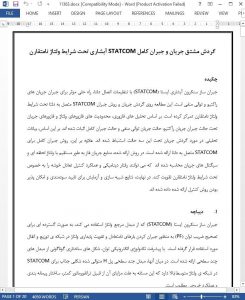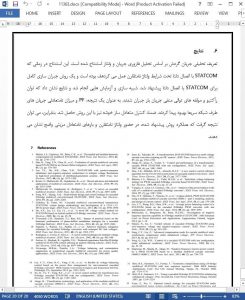Abstract
Cascaded static synchronous compensator (STATCOM) with delta-connected configuration is an effective solution to compensate reactive and negative-sequence currents. This study focuses on the circulating current and compensation method of delta-connected STATCOM under asymmetrical voltage conditions. According to the phasor analysis, constrains of voltage phasors and current phasors under reactive current compensation mode, negative-sequence current compensation mode and comprehensive compensation mode are deduced. On the basis of this, the analytical expressions of circulating current under the three modes are derived. Furthermore, a comprehensive compensation method for delta-connected STATCOM is proposed. In the proposed method, phase current references are calculated directly with the instantaneous voltage and current signals, which could enhance the dynamic behaviour and cluster-balancing control performance especially under asymmetrical voltage conditions. Finally, simulation and experiment results have been given to verify the effectiveness and feasibility of the proposed control method.
1 Introduction
The static synchronous compensator (STATCOM) using voltage-source converter has been widely utilised to correct power factor (PF), to compensate unbalanced loads and enhance voltage stability in distribution and transmission grid [1–3]. With the development of power electronics technology, various topologies of multilevel converters have been proposed [4, 5]. Among these, the cascaded H-bridge multilevel converter has been an attractive topology for STATCOM in middle/high voltage grid due to its advantages such as: transformer-less, modularisation structure and desirable output performance [6–8].
6 Conclusions
The analytical expression of circulating current is derived based on the phasors analysis of current and voltage, when delta-connected STATCOM operates under asymmetrical voltage conditions, and a comprehensive compensation method for delta-connected STATCOM is proposed. Simulation and experiments have been made and the results show that the reactive power and negative-sequence components of load currents were compensated, as a result the PF and unbalance degree of grid side currents were improved rapidly. Meanwhile, cluster-balancing control was also achieved with this method. Therefore, it can be concluded that the performance of the proposed method shows clear advantage in the presence of asymmetrical voltage and unbalanced loads.











